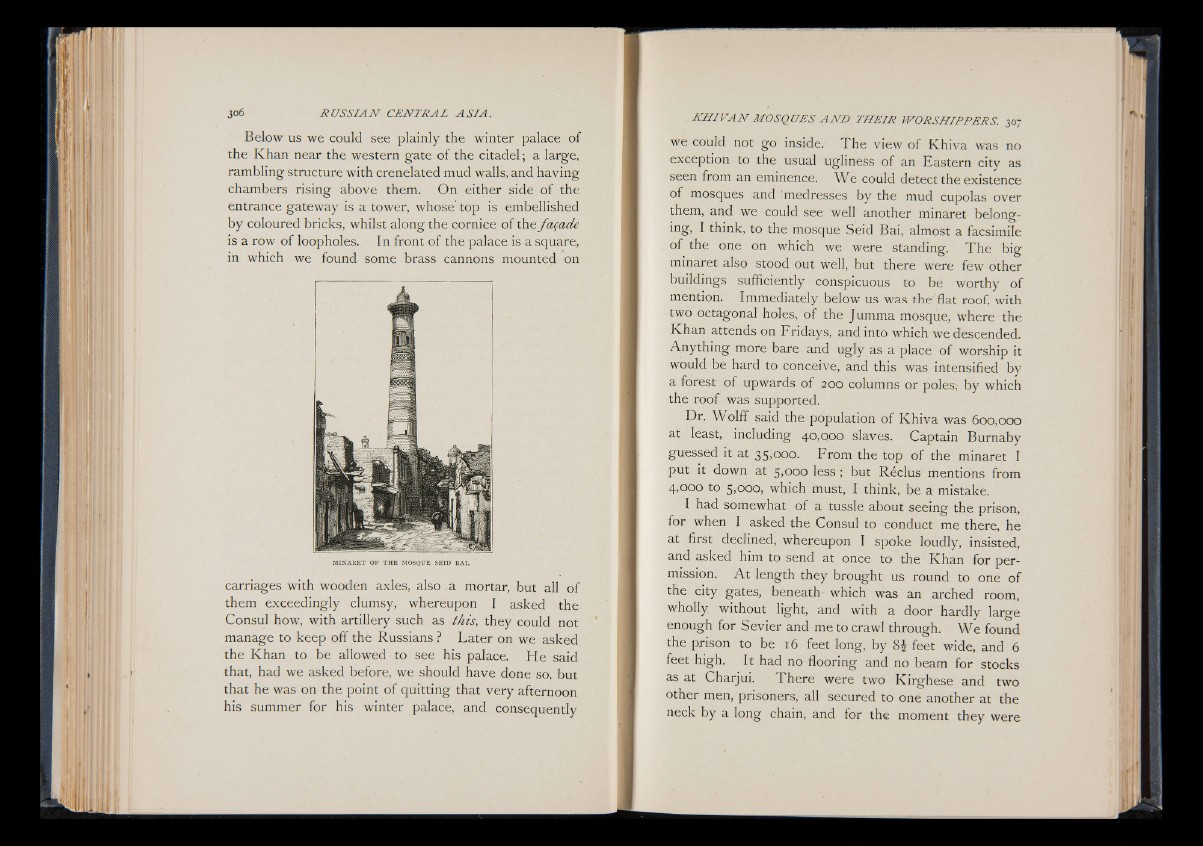
Below us we could see plainly the winter palace of
the Khan near the western gate of the citadel; a large,
rambling structure with crenelated mud walls, and having
chambers rising above them. On either side of the
entrance gateway is a tower, whose top is embellished
by coloured bricks, whilst along the cornice of the façade
is a row of loopholes. In front of the palace is a square,
in which we found some brass cannons mounted on
MINAKE T OF TH E MOSQUE SEID B A I .
carriages with wooden axles, also a mortar, but all of
them exceedingly clumsy, whereupon I asked the
Consul how, with artillery such as this, they could not
manage to keep off the Russians ? Later on we asked
the Khan to be allowed to see his palace. He said
that, had we asked before, we should have done so, but
that he was on the point of quitting that very afternoon
his summer for his winter palace, and consequently
we could not go inside. The view of Khiva was no
exception to the usual ugliness of an Eastern city as
seen from an eminence. We could detect the existence
of mosques -and ^medresses by the mud cupolas over
them, and we could see well another minaret belonging,
I think, to the mosque Seid Bai, almost a facsimile
of the one on which we were standing. The big
minaret also stood out well, but there were few other
buildings sufficiently conspicuous to be worthy of
mention. Immediately below us was the flat roof, with
two octagonal holes, of the Jumma mosque, where the
Khan attends on Fridays, and into which we descended.
Anything more bare and ugly as a place of worship it
would be hard to conceive, and this was intensified by
a forest of upwards of 200 columns or poles; by which
the roof was supported.
Dr. Wolff said the population of Khiva was 600,000
at least, including 40,000 slaves. Captain Burnaby
guessed it at 35,000. From the top of the minaret I
put it down at 5,000 less ; but Reclus- mentions from
4,000 to 5,000, which must, I think, be a mistake.
I had somewhat of a tussle about seeing the prison,
for when I asked the Consul to conduct me there, he
at first declined, whereupon I spoke loudly, insisted,
and asked him to send at once to the Khan for permission.
A t length they brought us round to one of
the city gates, beneath which was an arched room,
wholly without light, and with a door hardly large
enough for Sevier and me to crawl through. W e found
the prison to be 16 feet long, by 8i feet wide, and 6
feet high. It had no flooring and no beam for stocks
as at Charjui. There were two Kirghese and two
other men, prisoners, all secured to one another at the
neck by a long chain, and for the moment they were